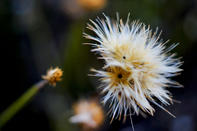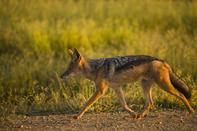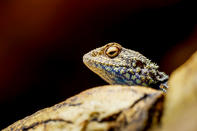Rare and Interesting Plants
Today, the Cederberg is one of the country’s principal catchment areas and one of its finest wilderness regions. Apart from the Clanwilliam cedars, the mountains are a delight to naturalists and botanists for the many other rare and interesting plants that are to be found here.

Most attractive of all, perhaps, is the snow protea, Protea cryophila, whose specific name means cold-loving. The rocket pincushion "Leucospermum reflexum" grows only in the northern Cederberg, though it is a common garden plant.
Other commercially exploited plants include buchu "Agathosma spp." — found in the kloofs rooibos and elephant's foot "Dioscorea elephantipes", which grow on the lower mountain slopes and from which cortisone was first obtained, For the rest, it is mostly typical fynbos country, with heaths, proteas and flowering bulbs.
Animal Sanctuary

The Cederberg relatively great distance from Cape Town, and its inherent ruggedness, have led to the area being declared a leopard sanctuary. Farmers throughout the Western Cape are encouraged to allow conservationists to capture any 'problem' animals, which are then set free in the Cederberg.
Research in the Boland mountains indicates that Cape mountain leopards do not stick to defended territories, as is the case with most other predators, but roam across vast areas. Farmers in the greater Cederberg area have shown great foresight in agreeing to this pioneering conservation scheme. Cape wildcat and caracal, bat-eared fox on the sandy Karoo side, brown hyena, black-backed jackal, aardvarks and porcupines are all found in the wilderness region.
Bird Life and Reptiles

Bird life is abundant — in 1977, 81 bird species were recorded here — most conspicuous of which are the raptors. Reptiles likely to be seen are Cape rock agamas, geckos and skinks.
There are 15 species of snake, including berg adders, the most common snake in the area, puff adders and Cape cobras — these last two can both inflict fatally toxic bites. Remember at all times that ignorance and carelessness are your greatest dangers when dealing with poisonous snakes.
By David Bristow The Cederberg is named for the forests of Clanwilliam cedar trees that were all but exterminated two centuries ago for their fine timber. To...
The Cederberg is named for the forests of Clanwilliam cedar trees that were all but exterminated two centuries ago for their fine timber. To... Originally established in 1725 as Jan Disselsvalleij, Clanwilliam is one of the 10 oldest towns in South Africa. Clanwilliam is the gateway ...
Originally established in 1725 as Jan Disselsvalleij, Clanwilliam is one of the 10 oldest towns in South Africa. Clanwilliam is the gateway ...